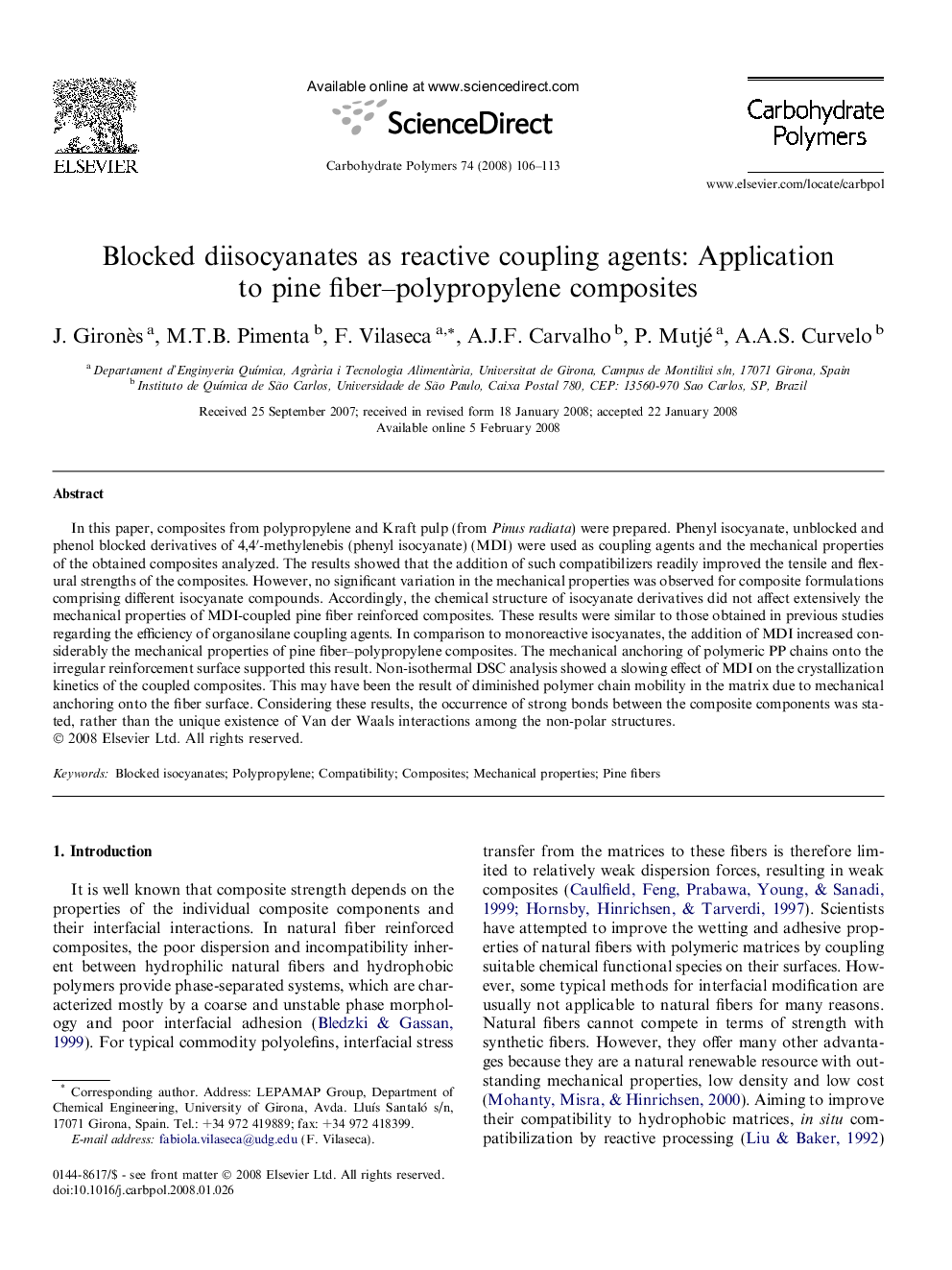| Article ID | Journal | Published Year | Pages | File Type |
|---|---|---|---|---|
| 1384483 | Carbohydrate Polymers | 2008 | 8 Pages |
In this paper, composites from polypropylene and Kraft pulp (from Pinus radiata) were prepared. Phenyl isocyanate, unblocked and phenol blocked derivatives of 4,4′-methylenebis (phenyl isocyanate) (MDI) were used as coupling agents and the mechanical properties of the obtained composites analyzed. The results showed that the addition of such compatibilizers readily improved the tensile and flexural strengths of the composites. However, no significant variation in the mechanical properties was observed for composite formulations comprising different isocyanate compounds. Accordingly, the chemical structure of isocyanate derivatives did not affect extensively the mechanical properties of MDI-coupled pine fiber reinforced composites. These results were similar to those obtained in previous studies regarding the efficiency of organosilane coupling agents. In comparison to monoreactive isocyanates, the addition of MDI increased considerably the mechanical properties of pine fiber–polypropylene composites. The mechanical anchoring of polymeric PP chains onto the irregular reinforcement surface supported this result. Non-isothermal DSC analysis showed a slowing effect of MDI on the crystallization kinetics of the coupled composites. This may have been the result of diminished polymer chain mobility in the matrix due to mechanical anchoring onto the fiber surface. Considering these results, the occurrence of strong bonds between the composite components was stated, rather than the unique existence of Van der Waals interactions among the non-polar structures.
